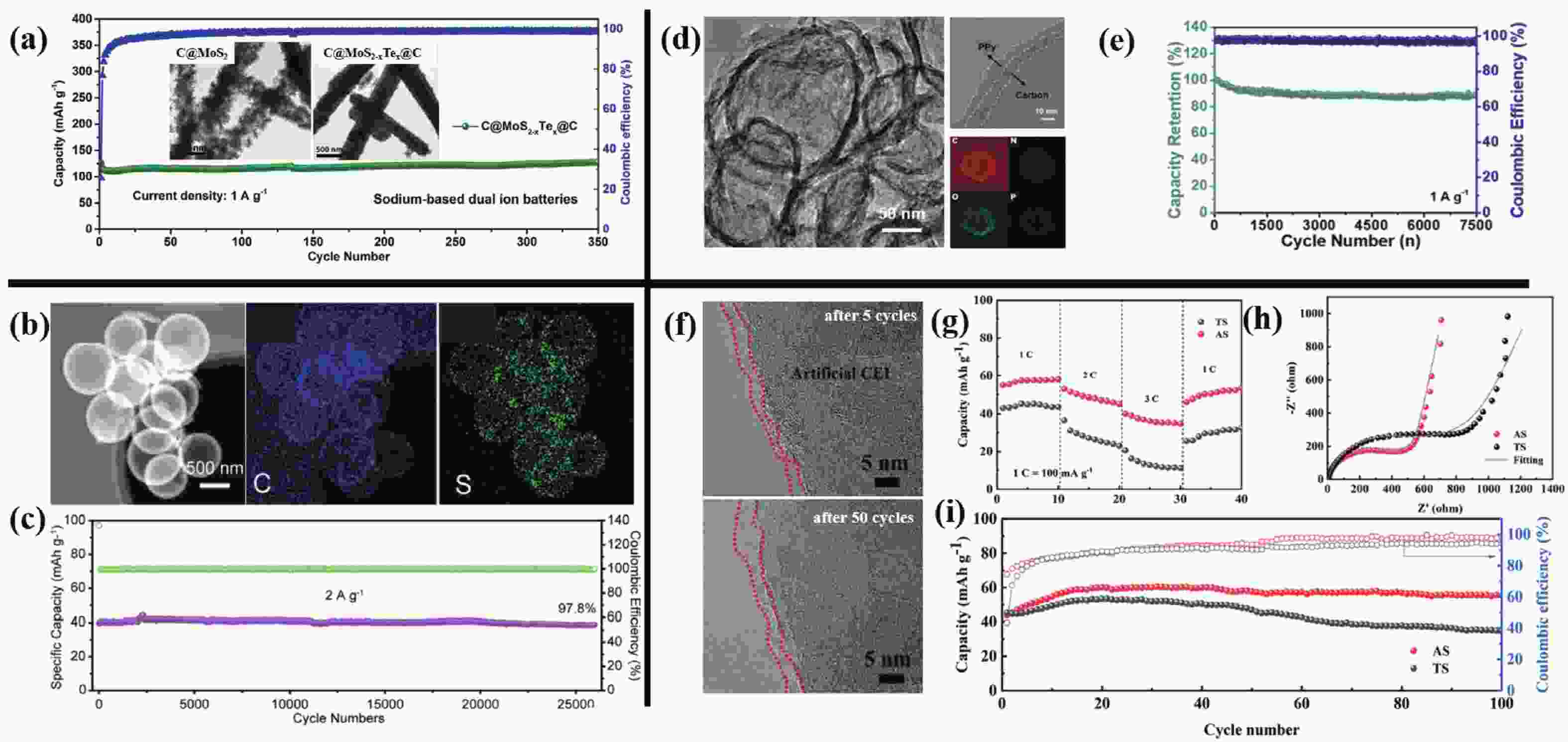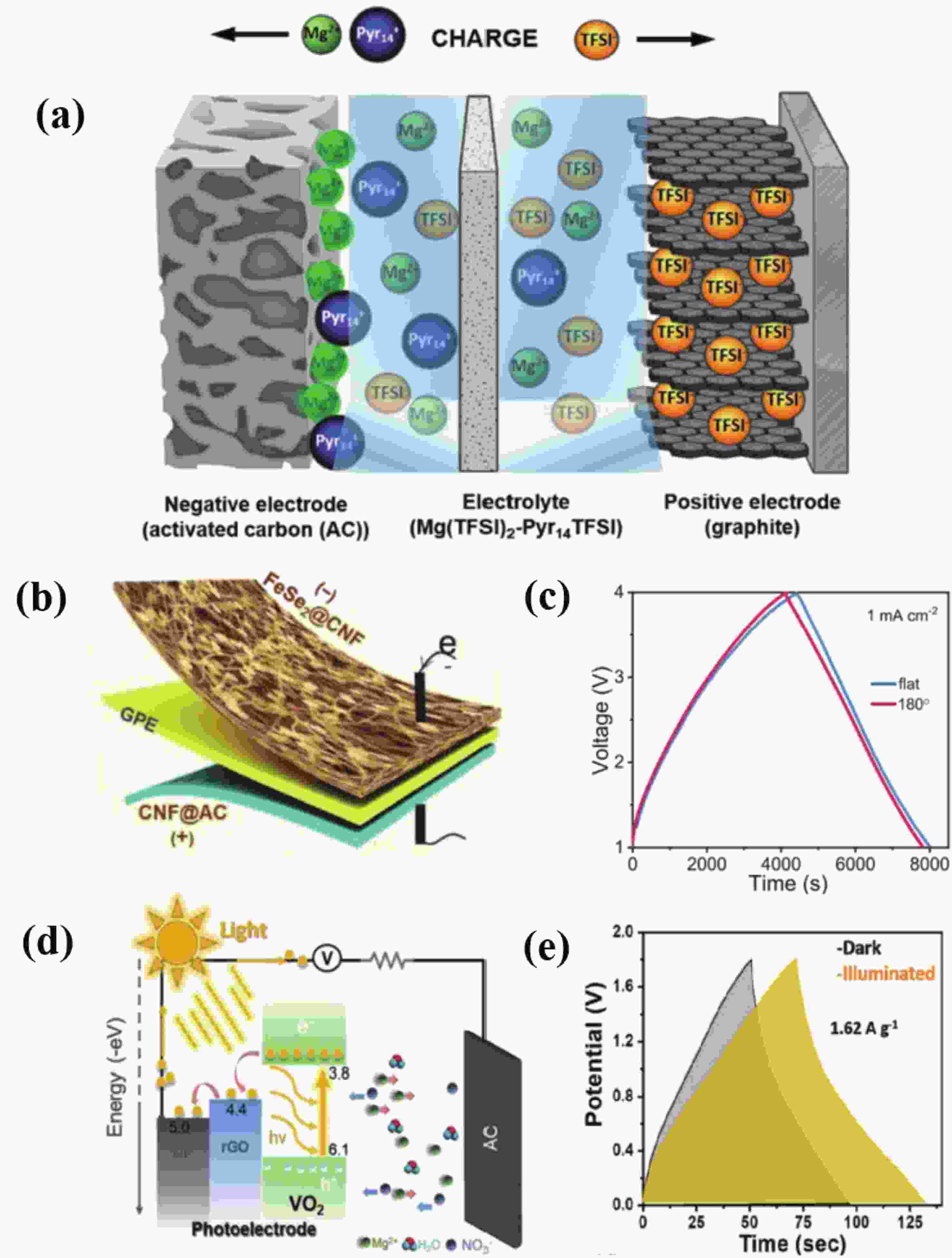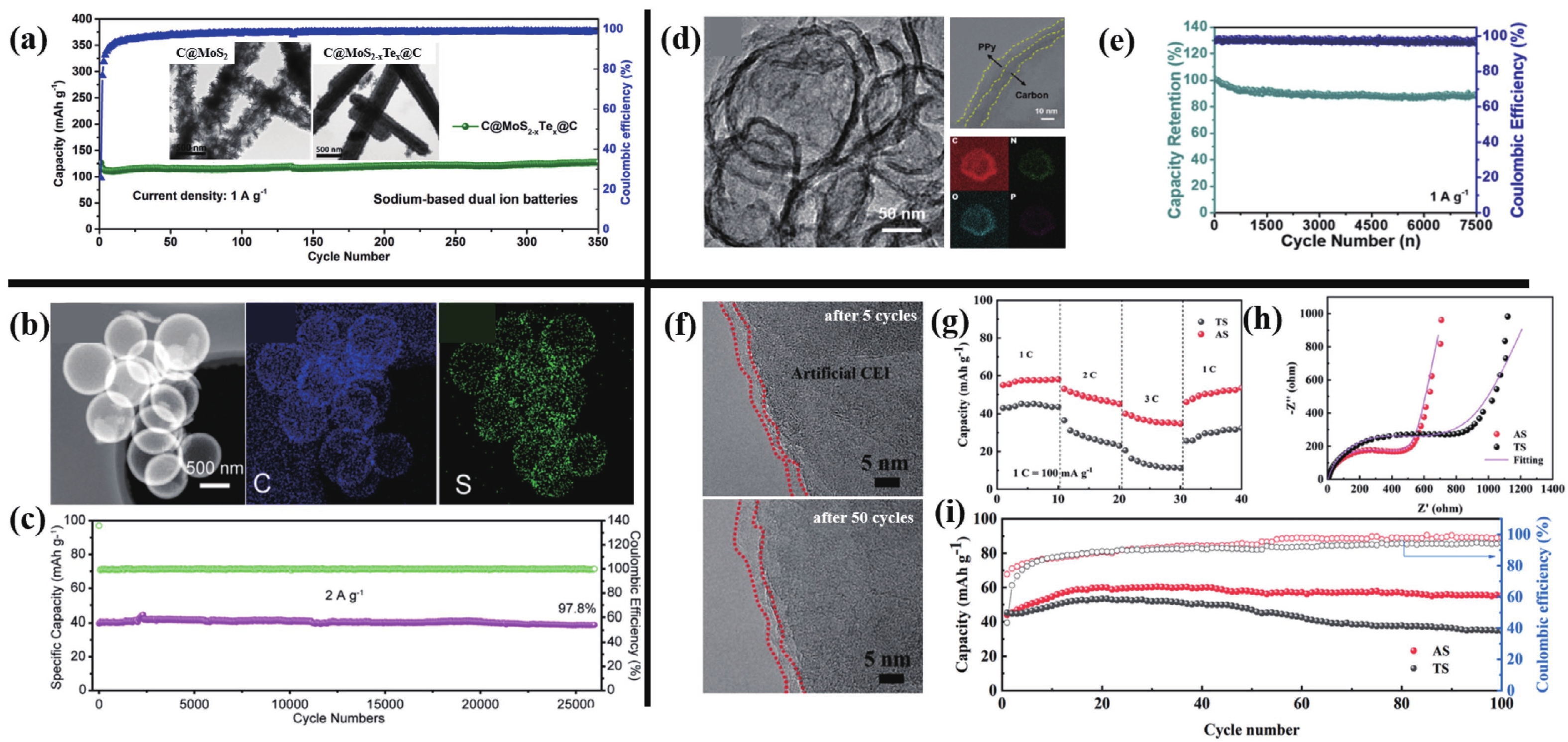| Citation: |
Shijiang He, Zidong Wang, Zhijie Wang, Yong Lei. Recent progress and future prospect of novel multi-ion storage devices[J]. Journal of Semiconductors, 2023, 44(4): 040201. doi: 10.1088/1674-4926/44/4/040201
S J He, Z D Wang, Z J Wang, Y Lei. Recent progress and future prospect of novel multi-ion storage devices[J]. J. Semicond, 2023, 44(4): 040201. doi: 10.1088/1674-4926/44/4/040201
Export: BibTex EndNote
|
Recent progress and future prospect of novel multi-ion storage devices
doi: 10.1088/1674-4926/44/4/040201
More Information-
References
[1] Deng L, Wei T, Liu J, et al. Recent developments of carbon-based anode materials for flexible lithium-ion batteries. Crystals, 2022, 12, 1279 doi: 10.3390/cryst12091279[2] Zhao C, Wang Z. An efficient entangled-photon source from semiconductor quantum dots. J Semicond, 2020, 41, 010401 doi: 10.1088/1674-4926/41/1/010401[3] Zhang D, Tan, C, Ou T, et al. Constructing advanced electrode materials for low-temperature lithium-ion batteries: A review. Energy Rep, 2022, 8, 4525 doi: 10.1016/j.egyr.2022.03.130[4] Zhao C, Xu B, Wang Z, et al. Boron-doped III-V semiconductors for Si-based optoelectronic devices. J Semicond, 2020, 41, 011301 doi: 10.1088/1674-4926/41/1/011301[5] Gao Y L, Pan Z H, Sun J G, et al. High-energy batteries: Beyond lithium-ion and their long road to commercialisation. Nano-Micro Lett, 2022, 14, 94 doi: 10.1007/s40820-022-00844-2[6] Zhu H F, Sha M, Zhao H P, et al. Highly-rough surface carbon nanofibers film as an effective interlayer for lithium-sulfur batteries. J Semicond, 2020, 41, 092701 doi: 10.1088/1674-4926/41/9/092701[7] Xu S F, Sun M X, Wang Q, et al. Recent progress in organic electrodes for zinc-ion batteries. J Semicond, 2020, 41, 091704 doi: 10.1088/1674-4926/41/9/091704[8] Amatucci G G, Badway, Du Pasquier, et al. An asymmetric hybrid nonaqueous energy storage cell. J Electrochem Soc, 2001, 148, 930 doi: 10.1149/1.1383553[9] Zheng J S, Xing G G, Zhang L Y, et al. A minireview on high-performance anodes for lithium-ion capacitors. Batter Supercaps, 2021, 4, 897 doi: 10.1002/batt.202000292[10] Liu J, Wang Z J, Lei Y. A close step towards industrialized application of solar water splitting. J Semicond, 2020, 41, 090401 doi: 10.1088/1674-4926/41/9/090401[11] Zhou Y J, Wang Z D, Zheng C F. Construction of Co0.85Se@Ni nanopores array hybrid electrode for high-performance asymmetric supercapacitors. Chem Eng Sci, 2022, 247, 117081 doi: 10.1016/j.ces.2021.117081[12] Yang B J, Liu B, Chen J T, et al. Realizing high-performance lithium-ion hybrid capacitor with a 3D MXene-carbon nanotube composite anode. Chem Eng J, 2022, 429, 132392 doi: 10.1016/j.cej.2021.132392[13] Zong J G, Wang F, Liu H, et al. Te-doping induced C@MoS2– xTe x@C nanocomposites with improved electronic structure as high-performance anode for sodium-based dual-ion batteries. J Power Sources, 2022, 535, 231462 doi: 10.1016/j.jpowsour.2022.231462[14] Qiu C, Li M, Qiu D, et al. Ultra-high sulfur-doped hierarchical porous hollow carbon sphere anodes enabling unprecedented durable potassium-ion hybrid capacitors. ACS Appl Mater Interfaces 2021, 13, 4994, 2 doi: 10.1021/acsami.1c14314[15] Zhang M D, Zheng X, Mu J W, et al. Robust and fast lithium storage enabled by Polypyrrole-coated nitrogen and phosphorus Co-doped hollow carbon nanospheres for lithium-ion capacitors. Front Chem, 2021, 9, 760473 doi: 10.3389/fchem.2021.760473[16] Wang Q, Liu W X, Wang S S, et al. High cycling stability graphite cathode modified by artificial CEI for potassium-based dual-ion batteries. J Alloys Compnds, 2022, 918, 165436 doi: 10.1016/j.jallcom.2022.165436[17] Wang L, Zhang X, Li C, et al. Recent advances in transition metal chalcogenides for lithium-ion capacitors. Rare Metals, 2022, 41, 2971 doi: 10.1007/s12598-022-02028-8[18] Sun J, Li G, Wang Z, et al. Balancing the anions adsorption and intercalation in carbon cathode enables high energy density dual-carbon lithium-ion capacitors. Carbon, 2022, 200, 28 doi: 10.1016/j.carbon.2022.08.046[19] Kotronia A, Edstrom K, Brandell D, et al. Ternary ionogel electrolytes enable quasi-solid-state potassium dual-ion intercalation batteries. Adv Energy Sustain Res, 2022, 3, 2100122 doi: 10.1002/aesr.202100122[20] Chen Z, Li Z, He W, et al. Lithium-sodium ion capacitors: A new type of hybrid supercapacitors with high energy density. J Electroanalyt Chem, 2021, 888, 115202 doi: 10.1016/j.jelechem.2021.115202[21] Meister P, Kupers V, Kolek M, et al. Enabling Mg-based ionic liquid electrolytes for hybrid dual-ion capacitors. Batter Supercaps, 2021, 4, 504 doi: 10.1002/batt.202000246[22] Liang T, Mao Z, Li L, et al. A mechanically flexible necklace-like architecture for achieving fast charging and high capacity in advanced lithium-ion capacitors. Small, 2022, 18, 2201792 doi: 10.1002/smll.202201792[23] Park S K, Boruah B D, Pujari A, et al. Photo-enhanced magnesium-ion capacitors using photoactive electrodes. Small, 2022, 18, 2202785 doi: 10.1002/smll.202202785[24] Ma M, Wang Z, Lei Y. An in-depth understanding of photophysics in organic photocatalysts. J Semicond, 2023, 44, 030401 doi: 10.1088/1674-4926/44/3/030401[25] Zeng L, Ma R J, Zhou Z X, et al. Ester side chains engineered quinoxaline-based D-A copolymers for high-efficiency all-polymer solar cells. Chem Eng J, 2021, 429, 132551 doi: 10.1016/j.cej.2021.132551[26] Li C, Li J, Huang Y, et al. Recent development in electronic structure tuning of graphitic carbon nitride for highly efficient photocatalysis. J Semicond, 2022, 43, 021701 doi: 10.1088/1674-4926/43/2/021701 -
Proportional views

§These authors contributed equally to this work and should be considered as co-first authors.





 DownLoad:
DownLoad:
















